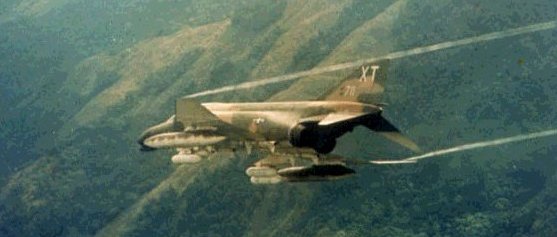
Home
FACs
More About FACs
The AO
A Shau Valley
• A Shau SF Camp
Hué
• Hué Cit Airfield
• MACV Compound
• LCU Ramp
• Hué Goose
Battle of Hué (Tet 1968)
• Trail FACs
The Missions
Visual Recon
• Sunken Sampan
Close Air Support
• CAS Munitions
• Rules of Engagement
• TACS
• Battle at Hua Cu
Interdiction
• McNamara Line
• Choke Points
Ranch Hand
Trail Dust Mission
Arc Light
SAR
Hammer 51 Rescue
Search for Jolly 23
• Msn Reports
• Search Area Map
• Search Rejoined
• Link to Past
Jungle Penetrator
Legacies
Aircraft
O-2A
Glossary
Resources
Contact
|


USAF photo
|
| |
Close Air Support (or CAS) missions were probably the most demanding flown by FACs in Southeast Asia.
Working a troops in contact (TIC) situation required the airborne FAC to coordinate with the ground commander, strike aircraft and command and control agencies on three different radios (UHF for fighters, VHF for command and control and FM for the ground troops).
While doing this he had to maintain visual contact with the friendly forces and attacking aircraft, locate and mark targets and avoid hostile ground fire.
At times there were mismatches between the tactical situation and the ordnance available on the fighter.
The Rules of Engagement were always there to "guide" you, but when the chips were down, common sense and your gut always were the best guides.
The knowledge that you were directing the use of deadly munitions in close proximity to friendly forces whose lives depended on you was a constant motivator.
Throw in mountainous terrain, smoke, bad weather and darkness, and a normally demanding mission would become even more exciting.
No two were ever the same.
| |
 |
Click on image at left for a narrative of a troops in contact close air support mission.
|
|
Links to additional Close Air Support information:
Description of CAS munitions
Description of the Tactical Air Control System (TACS)
• TACS Areas of Responsibility (AOR)
• CAS Guide for Ground Commanders
Primer on Close Air Support Procedures
Return to Top
| |
|



